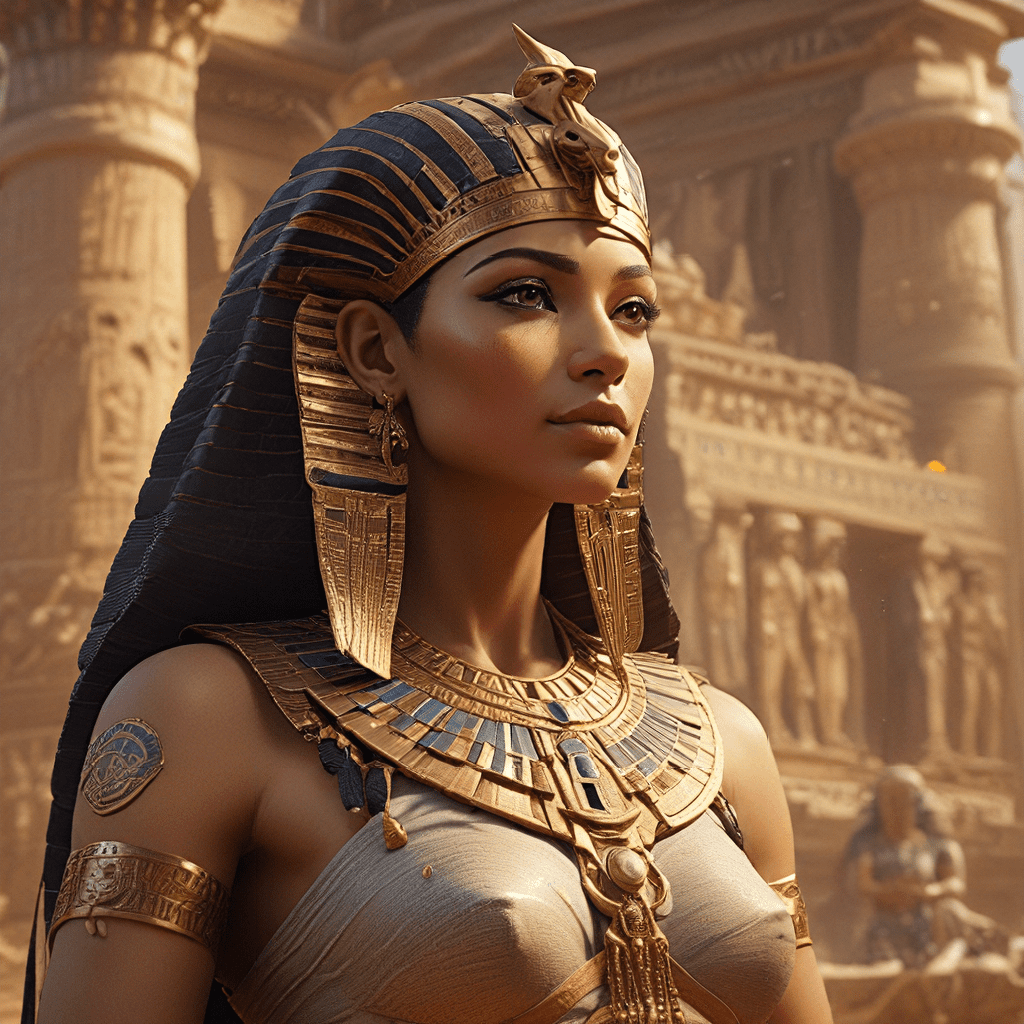The Egyptian Creation Myth: A Timeless Tale of Beginnings
The Egyptian Creation Myth is a captivating story that has fascinated people for centuries. It’s a cornerstone of ancient Egyptian culture, offering insights into their beliefs about the origins of the universe and the cosmos. This powerful narrative continues to resonate with modern audiences, reminding us of the enduring human fascination with the mysteries of creation.
II. The Cosmology of Atum
In the beginning, according to Egyptian mythology, there was only a vast, primordial ocean called Nun. From this watery abyss emerged Atum, the self-created god who embodied the essence of all that existed. He was the sole creator deity, the first being to emerge from nothingness. Atum’s emergence was a pivotal moment, signifying the birth of existence itself.
This creation event is often depicted in Egyptian art as Atum emerging from the Benben, a sacred stone that represented the primordial mound. The Benben is symbolic of the first landmass emerging from the primordial waters, marking the transition from chaos to order.
As Atum stood alone in the vast emptiness, he yearned for companionship. He uttered the words of creation, bringing forth the elements that would shape the world.
III. The Birth of Shu and Tefnut
Atum, in a grand act of self-creation, brought forth Shu, the god of air, and Tefnut, the goddess of moisture. These two deities represented the essential elements of the universe, symbolizing the very breath of life and the waters that sustain it.
The separation of Shu and Tefnut from Atum marked a significant moment in the creation narrative. It represented the creation of space and light, bringing order to the primordial chaos. Shu’s presence symbolized the expansion of the universe, while Tefnut’s moisture represented the potential for life to flourish.
IV. The Creation of Geb and Nut
The story continues with the union of Shu and Tefnut, who gave birth to Geb, the god of the earth, and Nut, the goddess of the sky. Geb and Nut embody the fundamental duality of the cosmos – the Earth and the heavens.
The relationship between Geb and Nut was complex and fraught with tension, as reflected in the myth of their separation. It is said that Atum, fearing the uncontrolled power of Nut’s fertility, separated her from Geb, preventing her from giving birth during the day. This separation, however, created the cycles of day and night, with Nut spanning across the heavens during the night and Geb beneath her, the earth.
V. The Emergence of the Ennead
From the union of Geb and Nut, a new generation of gods emerged, contributing to the creation of the world. These deities, along with the previous generation, formed the Ennead, the nine major gods of the Egyptian pantheon.
The Ennead deities, including Atum, Shu, Tefnut, Geb, Nut, Osiris, Isis, Seth, and Nephthys, represented the forces that shaped the universe and ensured its balance. They played critical roles in maintaining cosmic harmony, governing nature and human affairs. Their relationships and interactions, as depicted in Egyptian mythology, provide a rich tapestry of creation, life, death, and renewal.
VI. The Role of Ra
In the Egyptian Creation Myth, Ra, the sun god, emerged as a powerful force, often associated with Atum. Ra’s daily journey across the heavens, symbolized the cycle of day and night, bringing light and life to the world. He was seen as a creator god, responsible for maintaining order and vanquishing chaos.
The story of Ra’s creation is intertwined with the myth of Atum, highlighting the essential connection between the creator god and the solar deity. Ra’s journey across the sky was an act of creation and renewal, mirroring the cyclical nature of life, death, and rebirth.



